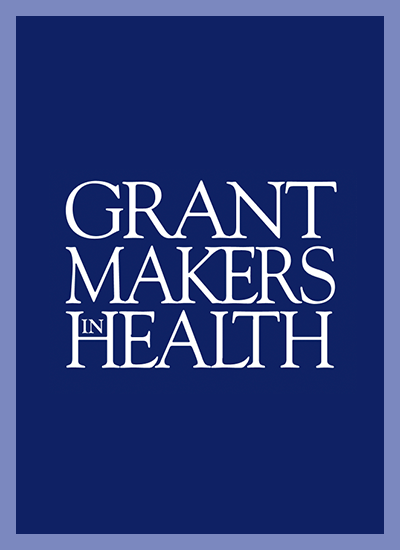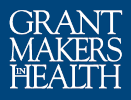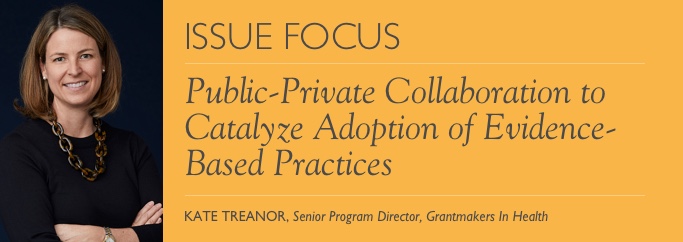May 2018

Working together, public and private funders can create lasting health improvements in the communities they serve. Foundations and state health agencies often have the same goals; they may even fund the same organizations, programs, and individuals. Collaborating to reach shared goals often leads to greater impact. Constructive exchanges, such as those begun during a special convening to discuss accelerating the Centers for Disease Control and Prevention’s (CDC’s) 6|18 Initiative, can also lead to real opportunities for government and philanthropy to work in partnership to improve health.
A Gathering of Public and Private Funders
Public and private funders recently gathered in Atlanta, Georgia to explore adoption of evidence-based interventions designed to address common, preventable health conditions. Using the CDC’s 6|18 Initiative as a framework for discussion, participants forged new relationships; identified areas of mutual interest and aligned priorities; and discussed how they might work together to contain costs, improve quality, and advance health. Meeting participants engaged with representatives from foundations, the CDC, state public health departments, state Medicaid agencies, the Association of State and Territorial Health Officials, and the National Association of State Medicaid Directors. The convening was cosponsored by the CDC Foundation, Grantmakers In Health, and Robert Wood Johnson Foundation.
The 6|18 Initiative
The 6|18 initiative targets adoption of evidence-based interventions addressing high-burden, high-cost health conditions. The six common, preventable conditions include: tobacco use, high blood pressure, health care associated infections, asthma, unintended pregnancy, and diabetes. Starting in 2016, the initiative was piloted in Colorado, Georgia, Louisiana, Massachusetts, Michigan, Minnesota, New York, Rhode Island, and South Carolina. In 2017, Alaska, Los Angeles County, Maryland, North Carolina, Nevada, Texas, Utah, and Washington, DC joined 6|18.
Through 6|18, the CDC partners with health care payers, purchasers, and providers. These include state health departments and Medicaid agencies, as well as health plans, health systems, providers groups, and other stakeholders. Partners are provided evidence on common, preventable health conditions and proven interventions to increase coverage, access, and quality. In addition, CDC works with payers to evaluate implementation of the interventions, promote provider uptake of evidence-based practices, and document the operational steps needed to deliver care.
Successful Partnerships to Address High-Burden, High-Cost Health Conditions
Throughout the convening, participants explored how foundations and state agencies—specifically health departments and Medicaid agencies—can collaborate. The first step: initiating and building relationships. Strong relationships and open communication are critical to recognizing areas of mutual interest and ongoing work, as well as identifying opportunities for formal partnership. Participants also acknowledged that collaboration can take many forms. Sometimes it is as simple as sharing information, including each other in meetings, or acting as thought partners. More structured opportunities include convening stakeholders, coordinating partners, and leveraging grants and other resources. Foundations can also act as catalysts to move issues forward when government cannot. They bring gravitas and credibility to issues, help move public opinion, broker relationships, and advocate for policy change.
The convening also highlighted how foundations are uniquely positioned to complement and advance the work of state health agencies. Technical assistance, data analysis, and evaluation help build the evidence base and propel adoption of proven practices. For example, the Pew-MacArthur Results First Initiative, a joint program of The Pew Charitable Trusts and The John D. and Catherine T. MacArthur Foundation, works directly with state and county governments to determine the return on investment of policies and programs. Through Results First, states create an inventory of currently funded programs, review which programs work, and conduct benefit-cost analyses to compare each program’s likely return on investment. The evidence is then used to inform spending and policy decisions. These efforts can help government leaders reduce costs, increase accountability, and improve outcomes.
A second example comes from the Healthcare Georgia Foundation. The Two Georgias Initiative, a new place-based investment by the foundation, nurtures health care innovation at the local level. In June 2017, eleven rural Community Health Partnerships throughout the state received planning grants to improve health care access for residents. An important piece of this work is helping communities utilize health care measures to inform interventions and policy. The foundation partnered with Georgia Institute of Technology’s Health Analytics Group to provide an interactive web-based portal offering data on disease prevalence, health care access, and Medicaid utilization, and exposure rates. Data is available at the census tract and county level. The Community Health Partnerships will also have access to the foundation’s Evaluation Resource Center, which offers evaluation services and tools customized to help nonprofits achieve better outcomes.
Representatives from state health agencies shared 6|18 implementation stories highlighting tobacco, asthma, and pregnancy prevention interventions. They also offered examples of collaborative efforts involving foundations and how those partnerships led to sustainable changes in policy, programs, and practices. The Rhode Island Department of Health, for example, is shifting investments from the health care sector to community-centered health equity zones (HEZ). This place-based strategy provides communities with the resources needed to address specific health objectives and create systems change at the local level. Each community has a backbone organization serving as a hub for HEZ activities. To maximize resources, the department of health successfully “braids” federal and state funds and collaborates with the private sector. For example, resources from 6|18, are being used to train community health workers as certified asthma educators. These individuals educate patients and their families, assess patients’ home environments, and coordinate with social services to keep patients healthy and reduce emergency room visits. Simultaneously, four HEZs partnered to train community health workers who can conduct needs assessments and build community-clinical linkages. In another example, the health department awarded the Providence HEZ a grant to improve child health and well-being. This grant dovetails with funding to the same backbone organization from The Annie E. Casey Foundation as part of its Evidence2Success initiative, which seeks to expand the use of proven programs to enhance child well-being.
In Colorado, public and private funders worked collaboratively over several years to make long-acting reversible contraceptives (LARCs) available a low or no cost. As a result, the state experienced significant reductions in rates of unintended teen pregnancy and abortion, as well as reduced rates of rapid repeat pregnancies for all age groups. A private foundation anonymously provided initial funding for the program, which included 75 family planning clinics across the state. Investments were made in provider training, provision of LARC devices, and program evaluation. When this grant ended, several other foundations in Colorado stepped up to provide bridge funding, as well as support a range of advocacy efforts aimed at securing state funding for the program. As a direct result, funds for the Colorado Family Planning Initiative were included in the 2016 and 2017 state budgets.
Finding Common Ground and Opportunities for Shared Success
Complex health issues cannot be solved by the public or private sectors working alone. Successful collaboration, however, takes time to develop and grow. Convenings such as this offer a unique opportunity for grantmakers and state health officials to begin building relationships, identifying shared interests, and understanding the assets each partner brings to the table. For participants at the Atlanta meeting, constructive conversations about common goals and ongoing work can lead to real opportunities for government and philanthropy to work in partnership to improve the health of populations in states participating in the 6|18 initiative.
Focus Areas:
Topics:

